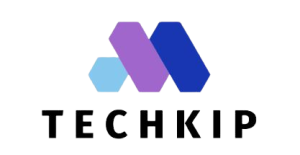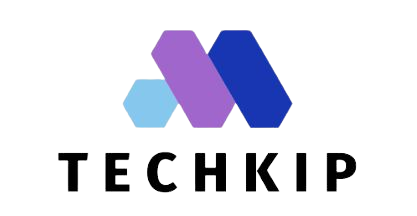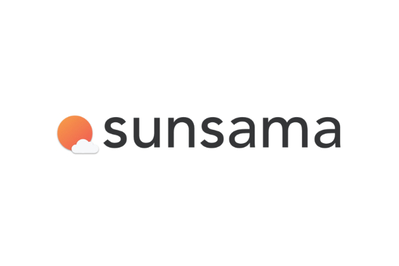
Sunsama promises that it can “make work-life balance a reality.” No app can actually do that for you—at least, not on its own—but after I tried managing my schedule in Sunsama for a few weeks, I found that it did push me to build a healthier relationship with work.
It does the tedious task management for you, pulling tasks and appointments from email, calendar, and productivity apps, reminding you to plan your day, and rescheduling tasks when you can’t finish everything. Then it’s up to you to prioritize the tasks, organize them, and ask Sunsama to move them into available time slots.
It isn’t as automated as competing AI task-scheduling apps, and both learning the app and planning out your daily schedule take time. It’s also expensive in comparison with traditional to-do list apps, at $20 per month. For that investment, you get a calmer, journal-focused take on task management that won us over in testing—even as we concluded that AI-powered task scheduling is not the best option for most people today. Instead of attempting to automate everything, it helps you approach work more mindfully and prevents critical work from falling through the cracks.

It forces you to think about your tasks. Sunsama is more a planner than a to-do list. Each morning, it reminded me of tasks I didn’t complete the previous day, along with tasks I had planned to work on that day, helping me prioritize which tasks to work on and which ones to save for later.
It then showed my predicted workload for the day, counting both tasks and meetings, along with my preferred shutdown time—and it would warn me if my day was overbooked. It also nudged me to write down anything important for the day, in addition to offering a space for me to think about any obstacles impeding my progress.
Throughout the day, Sunsama pushes you to put the same level of thought into each task. At first, I would check off tasks in the calendar view, similar to my approach in other to-do list apps. But I quickly came to like its Focus mode, which hides all other tasks, giving you instead a space to add notes, check off sub-tasks, and track the time you’re spending on that task. Complete a task, and the next task automatically comes into view.

It’s a universal inbox for tasks. Sunsama integrates with lots of external apps that today’s professionals commonly use, including:
- Gmail and Outlook for both email and calendars
- Microsoft Teams and Slack for turning chat messages into tasks
- GitHub, Jira, and Linear for working on developer-focused issues
- Notion for working on notes
- Apple Reminders, Asana, ClickUp, Todoist, Toggl, and Trello to pull in tasks from those popular to-do list apps
Pulling in tasks from Todoist and Trello worked as expected, and being able to add pull requests and issues from GitHub or messages from Slack to my task list was a nice extra. The Gmail integration was the one I came to find most indispensable, though, since it allowed me to drag actionable emails onto my to-do list and see the full message contents without needing to open Gmail separately.
When you’re wrapping up the day, Sunsama pulls in anything you worked on in integrated apps to build a full picture of your workday. This feature helped me see where the time went on a day in which I had cleared off a number of emails and pushed a couple of GitHub pull requests but hadn’t added any tasks directly to Sunsama.

It has small, useful AI integrations. Auto-scheduling tasks is the headline feature for AI task-scheduling apps—but Sunsama doesn’t schedule all of your tasks automatically. Instead, when planning your day, you hover your mouse over a task and then press X on your keyboard to prompt Sunsama to schedule it in the next available slot.
If you check off a task earlier than expected, if tasks take longer than anticipated, or if something comes up and you schedule a new task on top of an existing task’s time, Sunsama adjusts your task schedules as appropriate. And it can automatically add gaps between tasks for a buffer to catch your breath.
AI plays a role when you’re adding new tasks, too. After it learns which tasks you add to which projects (Sunsama calls them “channels”) and how much time they tend to take, it automatically categorizes and estimates the time for new tasks.
Sunsama also surprised me at times. One day, I scheduled a Gmail email as a task. When I opened my daily report to make a journal entry about what I’d worked on, Sunsama produced an AI-generated summary of the email for a quick reminder of what the task had entailed. It was an unexpectedly delightful use of AI that made my journal entry more complete—even if it wasn’t exactly critical to my workflow.
Other features are more subtle automations. Sunsama will keep you from overbooking your schedule, suggesting that you push tasks to tomorrow instead. And if you don’t find time to get to a task four days in a row, it moves the task to your Archive—suggesting that the task may not be a core priority.
As for deeper AI integration, Sunsama is currently testing an AI-powered voice and text assistant to plan your day over a call or add tasks via SMS.

It’s a Pomodoro timer, journal, and habit-tracking app, too. You can start your day with what Sunsama calls a “ritual” to plan and jot down thoughts. Then, when it’s time for you to wrap up, the app logs the day’s work and recommends that you journal the day’s highlights.
With a full schedule of tasks planned out each morning, it would be easy to disappear into work, clearing out tasks one after another. That nearly happened to me—until a gong rang out in the background and Sunsama’s Pomodoro timer popped up, suggesting that I take a break. The app did the same thing when it was time for me to switch focus to another task, as well as when it was time for me to finish up for the day, offering another journal space for me to reflect on how the day went.
Sunsama pushes you to focus on what’s important, with recurring tasks—good for routine work tasks as well as personal things you should do, such as exercising and reading—and “objectives” to keep your largest goals in mind as you plan each day’s agenda.
Instead of acting as an autopilot, it’s a copilot for your schedule, providing step-away-from-the-grind reminders that create a thoughtful balance between focused productivity and staying aware of the time.

It’s privacy-focused. Sunsama’s AI features are powered by an “open-source AI model hosted securely in our cloud environment,” according to Sunsama’s privacy policy, which adds that “[your] data is processed privately and is never used to train external systems.”
Additionally, all data in Sunsama is encrypted in transit and at rest, and it is not shared with third parties who don’t already have access to it.
Flaws but not dealbreakers

- It takes time to learn. Sunsama requires fewer clicks to set up than competing tools, but its vocabulary requires acclimation. Sunsama organizes tasks into “channels,” what other apps call projects. You can group channels into “contexts,” creating a relationship between a project and a sub-project. It doesn’t, however, offer task prioritization, which seemed like a miss to me after I used the competing Motion and Reclaim AI apps to schedule tasks based on priority. Instead, Sunsama lets you tie tasks to “objectives” to focus on work that moves your goals forward. None of this is too difficult to grasp, but it does require changing how you think about tasks.
- Automation doesn’t work on mobile. Sunsama’s mobile apps (Android, iOS) are well designed but do not include full integration with external apps or task-scheduling support. Whereas the desktop apps show, say, your full Todoist inbox, the mobile app shows only the Todoist tasks you’ve already scheduled in Sunsama. (To schedule a new Todoist task on the go, you have to copy it from the Todoist app and then paste it into Sunsama). Automatically scheduling tasks into your next available slot is, similarly, a desktop-only feature. The mobile app does offer AI features to file tasks into channels and estimate their duration, though.
- The app lacks a meeting scheduler. Sunsama’s core focus is your personal work; it doesn’t provide any team-focused, collaborative features. As such, it lacks a Calendly-style scheduling tool, which is a feature that many competing apps offer. You won’t find any tools to view schedules in multiple time zones, either. However, since Google Calendar now includes a built-in tool to share your availability and book meetings, Sunsama’s omissions are less of a downside than they might otherwise seem.
- It’s expensive. At $20 per month at this writing, Sunsama costs four times as much as Todoist and is double the price of a subscription to Microsoft 365’s Office suite. It does more than Todoist, but the value proposition makes sense only if you juggle complex schedules across multiple calendars and project-management tools and commit the time daily to plan and then review your work.




 Viesearch - The Human-curated Search Engine
Blogarama - Blog Directory
Web Directory gma
Directory Master
http://tech.ellysdirectory.com
8e3055d3-6131-49a1-9717-82ccecc4bb7a
Viesearch - The Human-curated Search Engine
Blogarama - Blog Directory
Web Directory gma
Directory Master
http://tech.ellysdirectory.com
8e3055d3-6131-49a1-9717-82ccecc4bb7a